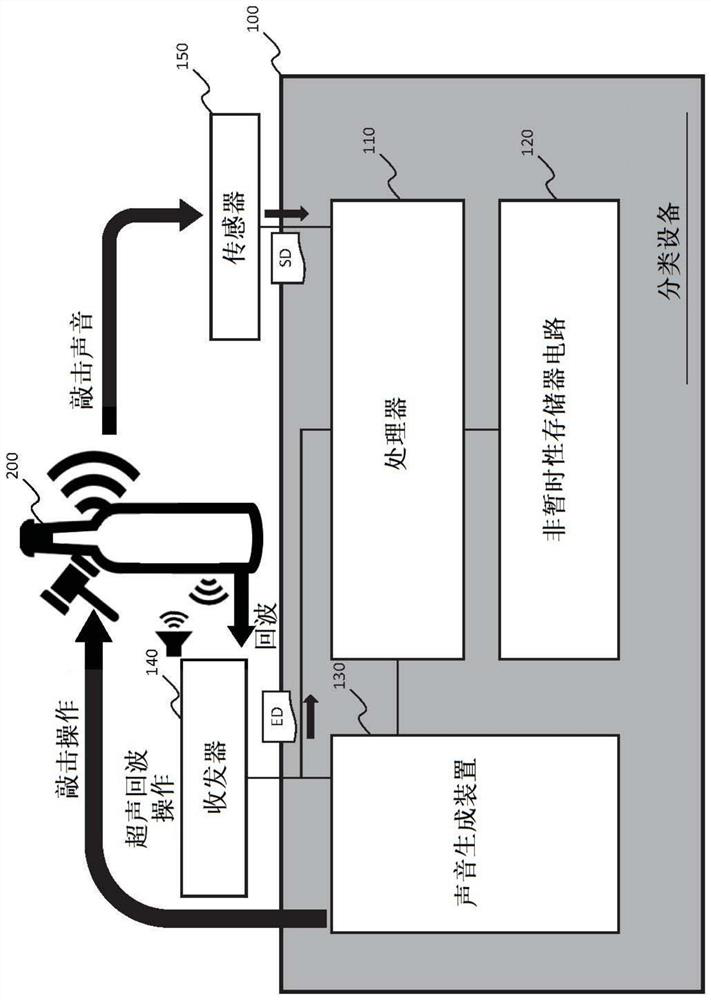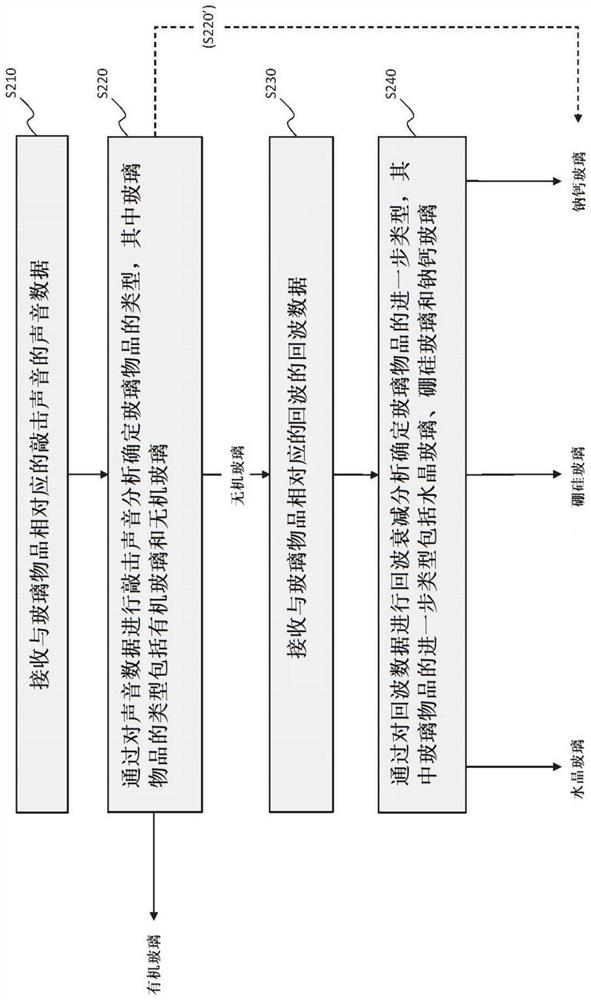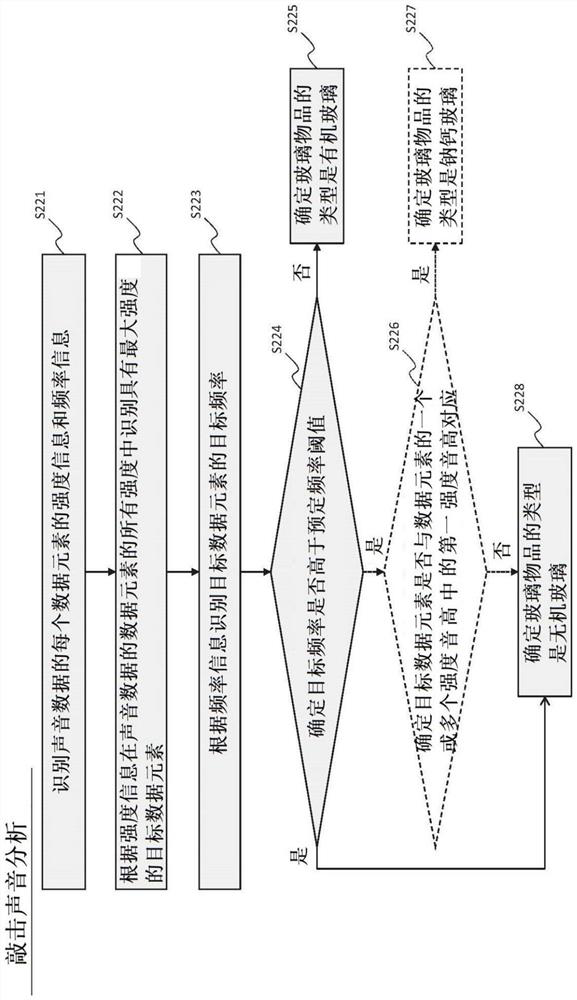Apparatus and method for classifying glass articles using acoustic analysis
A kind of classification equipment and glass technology, which is applied in the use of sound waves/ultrasonic waves/infrasonic waves to analyze solids, character and pattern recognition, instruments, etc. It can solve the problems of lack of spectral characteristics of waste glass, low precision and efficiency of glass classification, etc.
- Summary
- Abstract
- Description
- Claims
- Application Information
AI Technical Summary
Problems solved by technology
Method used
Image
Examples
Embodiment approach 1
[0033] refer to figure 2 , in step S210 , the processor 110 receives the sound data of the knocking sound corresponding to the glass object 200 from the sensor 150 . Next, in step S220, the processor 110 determines the type of the glass object by performing a tapping sound analysis on the sound data, wherein the type of the glass object includes organic glass and inorganic glass. Step S220 includes steps S221, S222, S223, S224, S225 and S228. In other words, "tapping sound analysis" is used to sort plexiglass items and inorganic glass items.
[0034] In another embodiment, the type of glass article further includes soda lime glass. That is, step S220 becomes step S220', in which the processor 110 determines the type of glass objects by performing a sound analysis on the sound data, wherein the types of glass objects include organic glass, inorganic glass and soda lime Glass. And compared with step S220, step S220' further includes steps S226 and S227. In other words, the...
Embodiment approach 2
[0063] The hardware and classification device of the second embodiment are the same as the classification device 100 of the first embodiment.
[0064] refer to Figure 9A , steps S910, S920 (S920') and S930 are the same as figure 2 Steps S210 , S220 and S230 are similar, and detailed descriptions are omitted here.
[0065] In step S940, the processor 110 determines further types of glass objects by performing sound velocity analysis on the echo data, wherein the further types of glass objects include crystal glass, borosilicate glass and soda lime glass.
[0066] Specifically, refer to Figure 9B , in step S941 the processor identifies the intensity information and time information of each data element of the echo data. Next, in step S942, the processor 110 identifies two pitch data elements corresponding to two adjacent intensity pitches of the echo data ED according to the intensity information, and then pairs the identified two pitches according to the time information ...
PUM
| Property | Measurement | Unit |
|---|---|---|
| Diameter | aaaaa | aaaaa |
Abstract
Description
Claims
Application Information
 Login to View More
Login to View More - R&D
- Intellectual Property
- Life Sciences
- Materials
- Tech Scout
- Unparalleled Data Quality
- Higher Quality Content
- 60% Fewer Hallucinations
Browse by: Latest US Patents, China's latest patents, Technical Efficacy Thesaurus, Application Domain, Technology Topic, Popular Technical Reports.
© 2025 PatSnap. All rights reserved.Legal|Privacy policy|Modern Slavery Act Transparency Statement|Sitemap|About US| Contact US: help@patsnap.com



